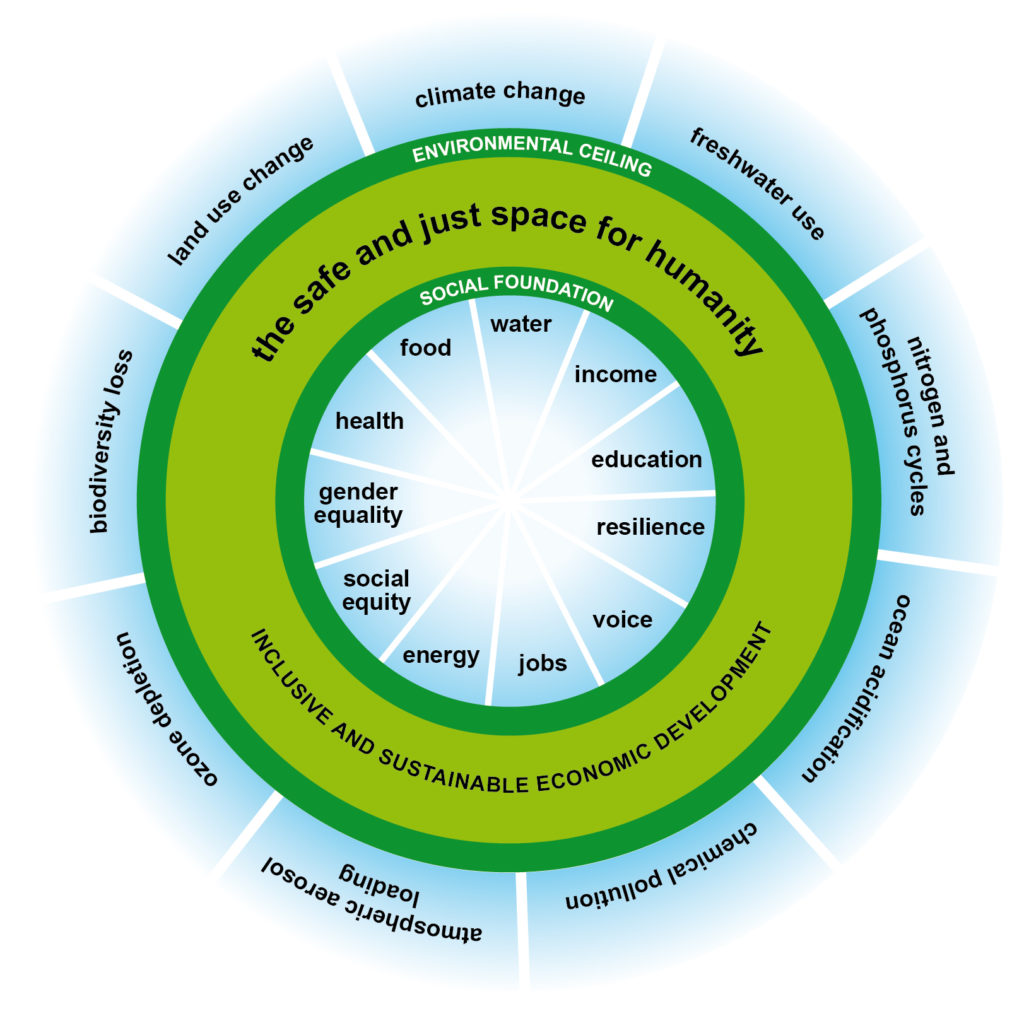Thriving not Growth
Have you heard of Kate Raworth’s economic model called Doughnut Economics? It’s delicious!
The Model
Shaped like a doughnut, I find it easy to digest. The inner circle shows our basic social needs: food, health, education, and housing (12 segments in total). The outer circle represents our ecological ceiling: climate change, ocean acidification, and chemical pollution (9 in total). We want to live in the doughnut. Outside the doughnut, we risk ignoring our basic human needs and destroying Earth’s life-supporting systems.
Unsustainable Growth
Raworth argues that the 20th century economic models of endless growth are completely unsustainable. Just like children grow to a certain size and then stop, so too must our economic system. But what would an economic model look like that didn’t indicate endless growth? That’s the part that piqued Raworth’s interest.
Social:
Economic growth over the last 100 years provided the stability to deal with many of our social problems such as gender inequality. Better healthcare and educational systems exist today but they’re in danger. There’s potential and actual backsliding taking place, not just in politically unstable countries but here in Canada. We need to take a stand to protect our social gains.

Ecological:
Raworth argues that endless growth, used in discussions of GDP by all first-world countries, has resulted in devastation to our planet. We see the effects of it today:
- forest fires in B.C. last summer and Colorado at Christmas;
- massive flood in November in B.C. from the atmospheric river;
- the extensive, largely man-made drought in California that is ongoing.
Endless growth is not sustainable. All of us know this intuitively and yet we feel trapped in a net of our own making.
The 21st century Doughnut Economic model she describes is dynamic, distributive, regenerative by design, and looks at the group not just the individual.
Our goal – Thriving
Live within the doughnut. When we do so, we thrive. We step away from “growth” and step into “thriving.” The inner and outer circles become the boundaries that give us the balance we need in order to thrive.
People are taking notice of Raworth’s work. In fact, the city of Amsterdam has created its business plan based on the model. They unveiled it in April 2020 right at the height of the initial public outbreak of COVID in Europe. They found this wholistic model brought different disciplines together in ways they hadn’t imagined before and brought new ideas as a result. For example, they designed a residence 1) combining different income brackets 2) built using sustainable materials 3) in a location that minimized impact on the environment.
Your Challenge
How can you adapt Doughnut Economics in your business, in your life? I’m a one-woman show so knowing how to adapt it isn’t immediately obvious.
I find the easiest way to move the macro to the micro is to concentrate on the key message. In this case, I focus on thriving versus growth. Yes, I want my business to grow and yes, I want to continue growing as a person. And yet, what if I looked at the same things through the eyes of “thriving?”
Thriving feels good. There’s a lightness – a joyousness – that comes from thriving. Growth implies effort instead of ease. I want more ease in my life, less force. Thriving feels communal. When I’m doing well, so are others around me. I care about my impact on others and the environment. There is balance within and without.


